Mith relatively few ingredients, you can easily make your own face mask to remove old skin, tone and refine the top layer of the skin.
In this article, we take an in-depth look at homemade face masks, giving you recipes and guidance.
Learn how to make face masks that suit your skin and situation for better results.
Use the finest clays the world has to offer along with pure floral waters and delicious oils.
Create masks that cleanse, nourish, condition and remove impurities with the best results.
That's what we call best facial oils in the test...
[lepopup slug='optin-diy-recipes']- What is a face mask?
- Homemade face mask
- Benefits of a face mask
- What types of face masks are there?
- Make your own homemade face mask - completely chemical-free
- Experimenting with organic products
- Face mask recipes
- Face masks for kids and men
- Where can you buy ingredients for your homemade face mask?
- Dry or dehydrated skin
- Homemade face mask for dry or dehydrated skin
- Red and irritated or inflamed skin
- Oily and blemished skin
- Face mask for blackheads
- Moisturising face mask
- Experiment with your own homemade face masks
- Fruits and vegetables for your face mask
- Conclusion - Which homemade face mask do you prefer?
What is a face mask?
A face mask is, as the word suggests, a mask you apply to your face, typically after a cleanse, exfoliation or after you have received a facial massage.
Facial masks are used to treat your specific skin type or current situation. For example, if you have:
- Dry or dehydrated skin, the face mask should moisturise and hydrate the skin.
- If your skin is red or inflamed, the mask should soothe and calm.
- If your skin is oily and blemished, a face mask can help draw out impurities from the skin.
Usually, a face mask is left on the skin for 10-15 minutes - sometimes longer.
Face masks can contain ingredients such as clay, mud, aloe vera, seaweed, algae, essential oils, massage and vegetable oils, minerals, herbs and vitaminseach of which helps to close, moisturise, soothe, exfoliate, soften and tighten the skin.

Homemade face mask
The advantage of making your own face mask is that you can be sure that it only contains the ingredients you like and that you know you don't have allergies to.
Not to mention the many boring ingredients you can avoid, such as parabens and other synthetic fillers that can easily be found in some of the products you find in the shops.
As a bonus, you can also create a face mask that suits your exact needs - and that's what this article is all about.
Making your own face mask is easy and you can create one that matches your current needs:
Benefits of a face mask
Of course, it depends on what ingredients are added to the face mask, but as a starting point, a face mask can help with the following:
- Tighten up your skin
- Bring out your skin tone
- Moisturise your skin
- Nourish the skin
- Extract impurities from the skin
- Remedy stains and heal
- Soothe and calm the skin
- Preserve and generally rejuvenate the skin
What types of face masks are there?
Laughing masks
Clay masks are commonly used to absorb excess oil on the face and to help speed up the healing of acne. Clay masks can also be used elsewhere on the body to treat acne, such as on the back.
A clay face mask is often made from bentonite, an absorbent, non-toxic clay. Other ingredients can be added to a clay mask to provide extra drying power or to help soothe the skin.

Clay masks are therefore primarily used to draw out the skin's own excess oil (sebum) and dirt on the surface of the skin.
Clay face masks contain clay, kaolin (purifying clay) or bentonite (absorbent clay) to provide the tightening and sebum-absorbing effect.
Read more about clay for face masks here
Wide range of natural clay masks
Mineral Clay
Mineral Clay
Mineral Clay
Mineral Clay
Mineral Clay
Mineral Clay
Cream masks
Cream-based (or sometimes gel-based) face masks are often sold as moisturising masks and may contain various oils, emollients and extracts aimed at softening and smoothing the skin.
A variation of cream masks are so-called whitening masks, which contain chemicals that can lighten the skin. Both cream and clay masks are sometimes produced to be self-heating.
Self-warming masks contain ingredients that cause the mask to heat up when applied to wet skin.
Manufacturers of these masks claim that the heat both opens pores and promotes relaxed skin. Cream masks or gel masks are therefore primarily structured to hydrate and nourish the skin.

Exfoliating masks
Exfoliating masks are used to remove dead skin cells from the surface of the facial skin. The formulation of exfoliating masks can vary quite a bit.
Some exfoliating masks mix an abrasive material, such as peanut oil hulls, into a cream or clay base. The mask is applied and then removed or rinsed away so that the exfoliating material is scrubbed off the skin.
Other exfoliating masks rely on chemical exfoliation, such as alpha hydroxy acid to remove dead skin cells.
A third type of exfoliating face mask is a so-called peel-off maskThis is a gel mask that is applied in a thin layer on the face and allowed to dry. The mask is then peeled off in a layer from the face, which causes the dead skin cells to be torn away.
Exfoliating masks often harden into a rubbery existence over the skin and then peel off. These masks are cool and refreshing masks but can be difficult to work with.

Make your own homemade face mask - completely chemical-free
You can easily make your own face mask!
Fresh fruit, vegetables, milk, yoghurt, honey, vinegar and eggs have been used for centuries as homemade beauty remedies.
It's always fun to experiment and it's not the kind you'll find in the fancy tubs, jars and bottles sold at your local spa - mainly because of sanitation. But by using organic ingredients, you're saving your face from a lot of nasty pesticides.
Experimenting with organic products
Here you'll find a list of some of the most common ingredients for a homemade face mask and their benefits:
- Cucumbers - cools, soothes and heals. The classic eye spa. Or you can peel cucumber and put it in a blender with some other ingredients.
- Algae and seaweed - contains alguronic acid, which has been shown to increase cell regeneration and elastin synthesis. Elastin is a protein in the underlying layers of the skin that gives it firmness and elasticity. It provides an excellent anti-ageing effect.
- Aloe Vera - Use as a very gentle way to cleanse sensitive skin and to remove residual oil, dead skin cells and dirt, leaving your skin feeling clean and rejuvenated.
- Avocado - rich in vitamins A, B1, B2, D and E and natural oil. A great choice for dry and sensitive skin.
- Honey - has moisturising, toning and firming effects.
- Potatoes - use thin slices for Oily skin or to reduce bags under the eyes.
- Clay and Mud - absorbs waste products such as toxins, oil and dirt out of the body through the skin. Minerals and nutrients are absorbed by the skin, leaving it nourished and rejuvenated.
- Oils - both essential and vegetable oils, can contribute a wide variety of vitamins, minerals and essential fatty acidsthat nourishes, softens, moisturises and fragrances
- Papaya - Contains papain, a protein-cleaving enzyme that dissolves the dead outer layers of the skin. Do not use if your skin is already irritated or sunburnt.
- Apples - contains vitamins C and A as well as smallpox, which are skin-friendly nutrients.
- Eggs - Egg whites tighten and tone the skin.
- Herbs - Herbs and teas such as chamomile have a calming effect.
- Yoghurt - Contains natural lactic acid to help exfoliate the skin. Can be used alone as an emollient face mask and is suitable for all skin types.
Face mask recipes
Recipe #1 - A great all-rounder face mask
Ingredients
- 1 tbsp cosmetic clay of your choice
- 1 tsp yoghurt
- 1/2 tsp honey
- 1/4 tsp jojoba oil
- 1 drop lavender oil - essential oil
- 1 drop ylang ylang - essential oil
Preparation
In a small bowl, whisk together all the ingredients except the clay.
Slowly add the clay a little at a time, stirring thoroughly to create a spreadable paste (if you add it all at once you'll get lumps, which will be annoying when you're about to spread it on your face).
If the mixture seems too thick, add a little more yoghurt or a splash of milk. Don't increase the oil content as this will cause the mask to slide off your face.
Cleanse and moisturise your face, then smooth the homemade face mask over your face and neck - avoid your eyes and mouth.
Leave it on your face for 15 to 20 minutes
Wash off the homemade face mask using a warm, wet washcloth.
Follow up with toner and face moisturiser, such as a Prickly pear seed oil.
Replace yoghurt with milk, which removes dead skin cells and softens the skin. The higher the content of both yoghurt and milk fat, the more nourishing it will be for your skin. This means that, for once, it's not in your best interest to go low-fat.
You can also replace the jojoba oil in favour of others vegetable oilsthat matches your skin type.
Mineral Clay
Mineral Clay
Mineral Clay
Mineral Clay
Mineral Clay
Mineral Clay
Recipe #2 - Simple deep cleansing face mask
Ingredients
- 4 tsp clay (green or other colour)
- 1½ tsp water
- possibly a few drops of mild essential oil
Mix a little clay with water or a flower water - For example rose water. You can add a few drops of essential oil, but go for the mild ones; lavender, geranium, chamomile or other mild oils.
Rest time: Leave the mask on for 10 minutes.
Afterwards: Rinse and clean with warm water. Then add a moisturising oil, such as Prickly pear seed oil.
Recipe #3 - Firming face mask
It helps with an immediate lift and firming sensation, but also reduces skin discolouration, acne scars and is good for reducing colour differences in skin tone. The face mask is also effective at keeping pimples at bay.
Ingredients
- Two tbsp. yoghurt (natural)
- One tbsp. freshly squeezed lemon juice
Preparation
Mix the yoghurt and lemon juice together and apply to clean and dry skin on the face and neck. Leave to dry for 20-30 minutes.
As the mask begins to dry, you will feel it tighten up across your face and neck.
Then cleanse your skin in lukewarm water and finish with a cold rinse.
Use this firming face mask 2 times a week.
Face masks for kids and men
Yes, men are not as different as you might think. They, or should I say we, can easily use the same kind as our dear women.
Similarly, it's all about getting to know your skin and using a clay that matches. So again, the tip for men's face masks is to use a light-coloured clay if your skin is sensitive and experiment with darker clays if it's not.
With face masks for kids, face painting can be a fun thing to do for Halloween, but for the sake of beauty, few children will benefit from the properties of a clay mask.
For younger girls, it might be fun to play along at mum's beauty salon and try a mask, but always use only white kaolin clay for children and don't leave it on for too long.
In addition, we always recommend carrying out a allergy test beforehand to avoid rashes and unpleasant reactions. To test the clay, apply a small amount to the underside of the arm and leave it on for 2 to 5 minutes (the same as if it was for the face), as children shouldn't wear a mask for too long. If there are no signs of rashes, it is safe to assume that you can also use it on the face.
Where can you buy ingredients for your homemade face mask?
Things like yoghurt, apples, potatoes, milk, eggs, cucumbers and honey are all available at your local supermarket.Clay, aloe vera and herbs are available at your local herb shop.Most vegetable oils can be purchased right here at CHLEOPATRA.

Dry or dehydrated skin
As strange as it sounds, dry skin is not a lack of moisture. Studies comparing the water content of dry skin to normal or oily skin don't show a huge difference between them.
In fact, healthy skin is only made up of around 30% of water. That's why drinking a lot of water every day won't help reduce or improve dry skin.
The main reason why your skin becomes dry is actually about impairment. The outer layers of the skin simply lose their ability to maintain a normal level of moisture.
Mostly this is caused by sun damage, extreme water exposure and to some extent can be exacerbated by using skincare products that contain irritating or drying ingredients.
Dehydrated skin, on the other hand, is a temporary condition that has some overlap with dry skin. Most often caused by a change in the weather or by using a skincare product that isn't right for your skin type or contains irritating ingredients.
Using products that are loaded with alcohol can leave your skin feeling tight when it's actually oily. This is an example of "dehydrated skin", because if you remove the effects of this irritating product, your skin will be rehydrated and regain its moisture balance.
Generally speaking, dehydrated skin is easier to correct than dry skin. If your skin is dehydrated because of your environment, you need to take steps to do what you can to the greatest extent possible. This may mean adding moisture to your home, for example by adding some plants to humidify the space.
You may also need to pay more attention to how much time you spend outdoors or in the pool, as the chemicals used to purify the water can quickly dehydrate the skin. Salt from the sea can have the same effect.
Homemade face mask for dry or dehydrated skin
Recipe #4 - Face mask with banana
We say bananas and immediately think of the cute little Minions from the Universal Pictures animated film, who love bananas. We do too!
That's right: you can use a banana as an all-natural ingredient for your homemade face mask.
It moisturises the skin and leaves it feeling softer. Mash a medium-sized ripe banana into a smooth paste and then gently apply the banana mash to your face and neck. Leave on for 10 to 20 minutes and then rinse off with cold water.
Another popular mask recipe calls for using 1/4 cup natural yoghurt, 2 tablespoons honey and 1 medium banana (mashed).
Recipe #5 - Vinegar face mask
Use vinegar to tone skin When washing your face, mix 1 tablespoon of apple cider vinegar with 2 cups of water as a final rinse to cleanse and tighten your skin.
You can also make a homemade face mask by mixing 1/4 cup apple cider vinegar with 1/4 cup water and gently apply the mixture to your face and let it dry. After 10 minutes, rinse it off with cold/ lukewarm water.
Recipe #6 - Lemon face mask
Create a facial that both exfoliates and moisturises by mixing the juice of 1 lemon with 1/4 cup of olive oil or sweet almond oil.

Red and irritated or inflamed skin
Red, itchy, flaky and irritated skin can easily occur, especially among people with very sensitive skin. Irritated skin can be caused by any number of factors, including allergies, genetic issues, environmental irritants such as overexposure to sun or wind, or a poor or lack of facial care. D
It could be the soap you're using that's too harsh on your face or you might have some kind of skin eczema that causes red and irritated skin.
If you suspect that eczema or another underlying medical condition could be causing your problems, you should contact your doctor.
Recipe #7 - Homemade Face Mask for red and irritated skin
Green tea does a phenomenal job of soothing red pigments in the skin. When your skin is inflamed, itchy or irritated, one of the worst parts about this is walking around with a blotchy red face.
Green tea acts as a natural anti-inflammatory agent and will help to reduce redness and calm any swelling.
You can apply green tea, like this organic version from Stash Tea, to your skin in two ways.
Boil water and place 4-6 tea bags in it for 5 minutes. Soak a clean cloth in the wet tea and when it's at a comfortable temperature (still warm, but not burning, of course), let the cloth rest on your face.
Or you can squeeze excess water out of tea bags and apply them to your face directly.
Leave the cloth/teabags on your skin for 5-10 minutes and you will see a noticeable improvement in the appearance of your skin.
Oily and blemished skin
Acne is a familiar problem for many. Acne bacteria start in your pores and can be activated by hormonal, environmental or hereditary factors.
If you tend to have oily skin, your skin may be more susceptible to blackheads and clogged pores.
This can lead to bacteria collecting in these pores and eventually resulting in acne - or as we know it better pimples.
Many natural ingredients have anti-bacterial properties, especially essential oils such as tea tree or lavender oil as well as the vegetable oil tamanu. Spices like turmeric are also naturally rich in antibacterial properties.
Honey is a natural antibiotic and has a healing effect on the skin. The following ingredients are naturally occurring with antibacterial properties and can help relieve redness or discomfort associated with acne.
- Aloe vera
- Bi Wax
- Honey
- Jojoba oil
- Tamanu oil
Humectants are compounds that attract moisture. Many natural moisturisers are also healing for the skin, such as honey and aloe vera.
Use these in homemade face masks to aid healing and keep skin moisturised. Glycerin is a humectant that's great for use in cleansers and moisturisers.
Face mask for blackheads
Instead of pulling and tugging, like pore strips do, and ripping and poking, like various small metal tools do, clay masks gently draw out impurities without damaging the skin.
They work simply by absorbing excess oil and dead skin cells through capillary action. No need to rip and tear at your pores! And there's a far more gentle and superior way to treat blackheads than pore strips.
Besides treating blackheads, natural clay masks have other benefits too. Mud masks are believed to increase collagen synthesis. Collagen is the structural protein that holds connective tissue together and prevents skin ageing and improves acne and scarring.
Moisturising face mask
The purpose of the clay in a face mask is to draw impurities out of your skin.
The main problem, however, is that people with sensitive skin have classically stayed away from clay masks because of how drying they are to the skin.
Clay is something to look for if you have combination, oily or acne-prone skin, or if you feel like you have a lot of clogged pores.
To also be moisturising, you can look for clay masks with moisturising ingredients like aloe vera, glycerin or squalane, or it can have anti-inflammatories like chamomile extract or rosehip oil and other botanical oils.
This way, the clay will either be less drying or less irritating, or both.
In your homemade clay masks, you can achieve a moisturising clay mask by using vegetable oils such as jojoba oil, argan oil or Rosehip seed oil.
Recipe #8 - Homemade Face Mask for cleansing clogged pores and removing blackheads
Homemade face mask for oily and impure skin
- 1 tbsp. cucumber juice
- 1 egg white
- a few drops of lemon juice
- ½ tsp. clay
Preparation
Mix all the ingredients together until they form a smooth paste.
Apply the mask to the face, taking special care to avoid the eye area, and leave on for 10-20 minutes. Rinse thoroughly with lukewarm water.
Use this face mask for oily/combination skin once a week, preferably in the evening, because lemon juice makes the skin more sensitive to sunlight.
Recipe #9 - Homemade Face Mask to regulate the skin's own oil
Homemade face mask that relieves acne and nourishes the skin.
- 1 apricot (fruit)
- 1 tbsp. yoghurt
- ½ tsp. clay
Mineral Clay
Mineral Clay
Mineral Clay
Preparation
Mash the peeled apricot in a food processor or blender, then add the yoghurt and clay and blend all ingredients until they form a smooth paste.
Apply the paste to the face, avoiding the eye area, and leave on for 20 minutes. Rinse with lukewarm water.
Use this face mask for oily skin once or twice a week.

Experiment with your own homemade face masks
You may want to try making your own blends to see the different effects clean and natural products has on your skin. Whenever possible, make sure to buy organic and pure products, such as pure oils. Other exciting ingredients not previously mentioned:
- Tomatoes
- Strawberries
- Melons
- Papaya
- basil
- Parsley
- Extra virgin coconut oil
Fruits and vegetables for your face mask
Antioxidants
Most fruits and vegetables contain some form of antioxidant. Antioxidants fight free radicals, which break down cells and cause premature ageing.
A diet rich in antioxidants boosts energy, helps alleviate all kinds of ailments and naturally protects the skin from free radicals.
Fruit contains vitamin A and sometimes E (a potent antioxidant).
Many fruits contain alpha hydroxy acid, glycolic acid, salicylic acid and other acids. These acids help to remove the top layers of the skin, including dead skin cells.
They provide nourishment and a great opportunity to add a fresh, nicer and healthier looking skin and stimulate new cell growth.
The only limit is your imagination - get started now!
[lepopup slug='optin-diy-recipes']Conclusion - Which homemade face mask do you prefer?
There are almost endless possibilities for making your own homemade face masks - and here we've just reviewed 9 of them.
There's something for everyone and, of course, something for every skin type. Because you use a small amount of clay at a time, they are also inexpensive face masks. When using clay masks, always keep in mind that the lighter the colour of the clay, the better if your skin is sensitive.
When you use others clean raw materialsIt can sometimes be a little difficult to dose, but that's what makes it a little more exciting - you get a new experience every time.
Tell us how you prefer your face mask and what you think is its most important effect in the comments section below.
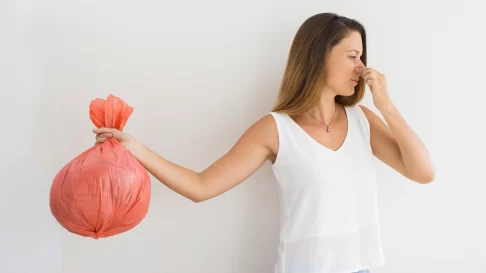





















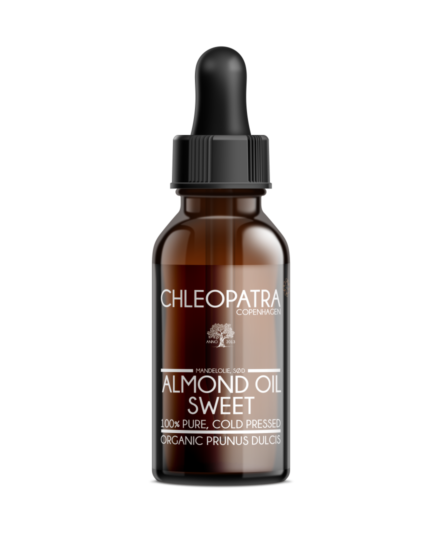




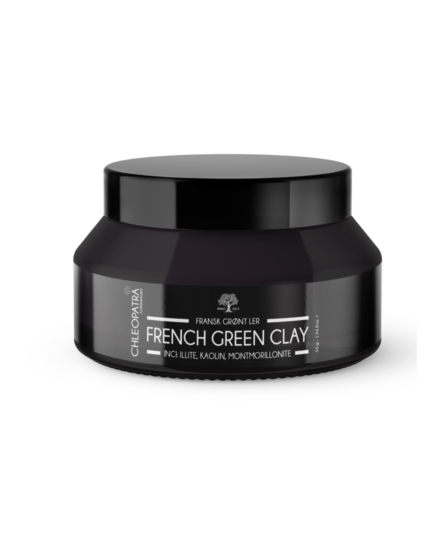
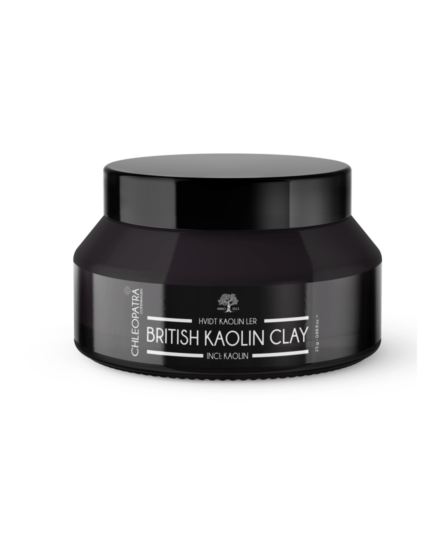







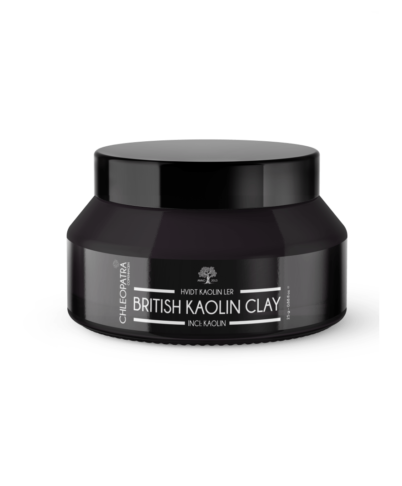







Firstly, thanks for the great info and recipes.
I am looking for a recipe that can be used in the eye area, where I am sometimes a little dry and itchy... can you help?
Regards Joan
Hi Joan, Thank you for your comment.
We don't currently have any DIY recipes for the eye area, but most people speak in favour of aloe vera gel (we don't sell it, but it's available in many places at reasonable prices).
For natural oils to treat the eye area, we recommend cacay oil or prickly pear seed oil. Both contain a good amount of natural vitamin E and can help tighten and remove dark circles under the eyes.
Of course, like any other cosmetic, you need to be careful not to get it in your eyes, so only apply as close as possible without getting it in your eyes.
The oils are not dangerous to get in the eyes, but will irritate them. If this happens, rinse thoroughly with water until the irritation disappears.
Who knows, maybe we can come up with a good recipe in the future, but until then, I hope you can use this answer.
Have an absolutely wonderful day!
The Chleo team